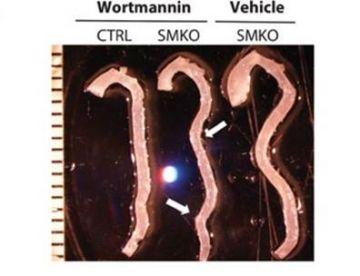Research News
Clarification of the signal transduction pathways that contribute to the formation of aortic aneurysms —Hope for a new target molecule in the treatment of aortic aneurysms—
The aorta is the primary artery that transports the blood ejected from the heart throughout the body. An aortic aneurysm is a condition where the wall of the aorta expands, and which has an extremely high mortality rate should this aneurysm ruptures. The clarification of the molecular mechanism behind aortic aneurysm occurrence and enlargement is considered to be urgently needed in order to establish medical treatments that can keep ruptures from happening.
Professor Hiromi Yanagisawa and Assistant Professor Yoshito Yamashiro of the Life Science Center of the Tsukuba Advanced Research Alliance have succeeded in identifying the signal transduction pathways that contribute to the formation of aortic aneurysms by creating mouse models of ascending aortic aneurysms, combining proteomic analyses to comprehensively investigate protein expression with biochemical and histological techniques. This discovery will provide knowledge that can link to the development of new medical techniques to treat aortic aneurysms.

The involvement of PI3K in aortic aneurysm formation
Original Paper
Yoshito Yamashiro1,Christina L. Papke1,Jungsil Kim, Lea-Jeanne Ringuette, Qing-Jun Zhang, Zhi-Ping Liu, Hamid Mirzaei, Jessica E. Wagenseil, Elaine C. Davis, and Hiromi Yanagisawa, Abnormal mechanosensing and cofilin activation promote the progression of ascending aortic aneurysms in mice, Science Signaling 8, ra105(2015).
doi: 10.1126/scisignal.aab3141.


